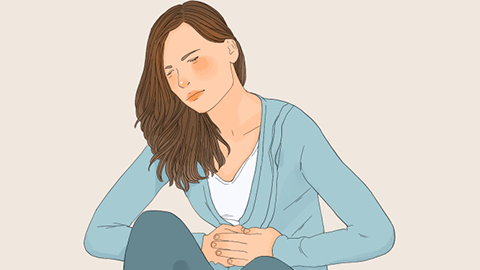What are the symptoms of cholecystitis?
Generally, cholecystitis can be classified into acute and chronic types. Symptoms vary depending on the severity of inflammation and whether biliary obstruction is present. Common symptoms include right upper abdominal pain, nausea and vomiting, fever, indigestion, and mild jaundice. A detailed analysis is as follows:
1. Right Upper Abdominal Pain
Acute cholecystitis typically presents as sudden-onset biliary colic, with pain radiating to the right shoulder or back. It may be triggered or worsened by consuming fatty foods. Chronic cholecystitis usually manifests as a dull or distending pain in the right upper abdomen, lasting for several hours. The pain results from inflammatory irritation of the parietal peritoneum or from gallstone obstruction of the cystic duct causing gallbladder spasm. The location of the pain corresponds anatomically to the position of the gallbladder.

2. Nausea and Vomiting
Nausea and vomiting occur in up to 70% of acute cholecystitis cases. The vomitus usually consists of gastric contents and may contain bile in severe cases. In chronic cholecystitis, vomiting is milder and occurs less frequently. These symptoms arise due to inflammation stimulating the vagus nerve in the gastrointestinal tract, leading to disrupted intestinal motility and delayed gastric emptying. Frequent vomiting may result in dehydration and electrolyte imbalances.
3. Fever
In acute cholecystitis, fever is typically moderate. However, if the condition progresses to suppurative cholecystitis or gallbladder perforation, high fever with chills may develop. Chronic cholecystitis usually does not cause fever or may only lead to low-grade fever. The underlying mechanism involves bacterial infection (e.g., *Escherichia coli*) triggering systemic inflammatory response in acute cases, whereas in chronic cases, inflammation remains localized within the gallbladder, resulting in minimal systemic reaction.
4. Indigestion
This is a characteristic symptom of chronic cholecystitis, presenting as postprandial fullness, belching, acid reflux, and aversion to greasy foods—symptoms often exacerbated by eating fatty meats or fried foods. Chronic inflammation leads to gallbladder atrophy and reduced bile secretion. Insufficient bile impairs fat digestion and absorption, resulting in gastrointestinal dysfunction.
5. Mild Jaundice
Mild jaundice commonly occurs in acute cholecystitis when there is concurrent bile duct obstruction—for example, due to a stone compressing the common bile duct. It is rare in chronic cholecystitis. Clinical signs include slight yellowing of the skin and sclera. Obstruction of bile outflow causes bilirubin to reflux into the bloodstream, resulting in mild jaundice, which typically resolves once the biliary obstruction is relieved.
If right upper abdominal pain is accompanied by fever and jaundice, prompt medical evaluation for possible biliary obstruction is necessary. Early intervention—such as antimicrobial treatment for acute cases and dietary management for chronic cases—can prevent worsening inflammation and complications.







